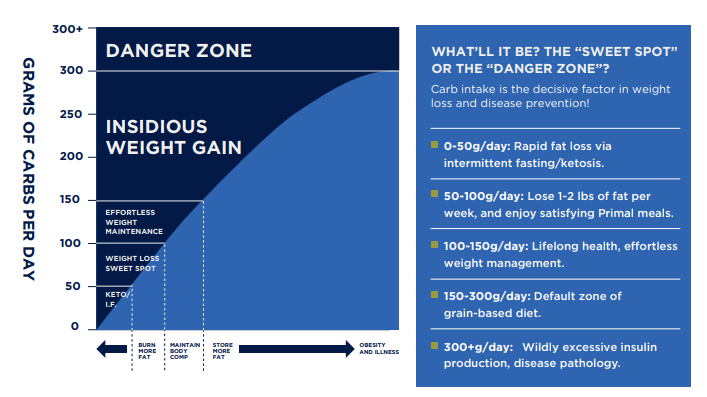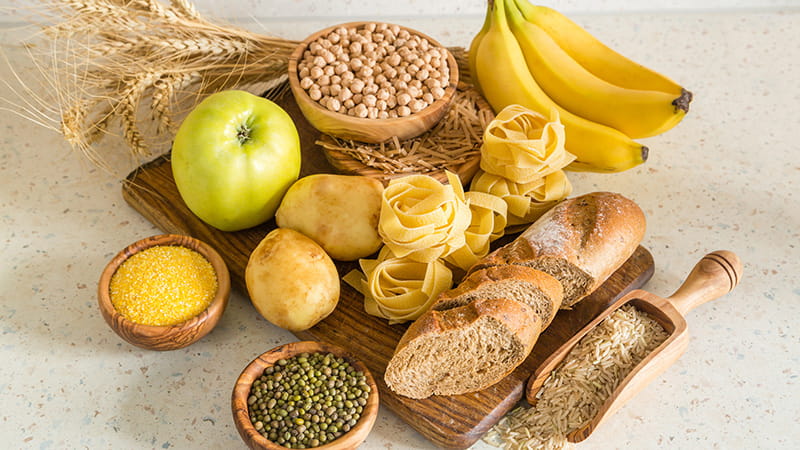The Carb Conundrum: Navigating the Sweet Spot for a Healthy Life
Let’s be real—carbohydrates get a bad rap. Depending on who you ask, carbs are either the ultimate energy booster or the mischievous villain lurking in your pasta bowl, ready to wreck your fitness goals. But like all good drama, the truth is somewhere in the middle.
Are Carbs Even Necessary?
First things first, let’s clear up a common misconception: carbs are not necessary for survival. That’s right, there are no essential carbohydrates. Unlike amino acids and fats, which our body cannot produce on its own, carbohydrates don’t make that list.
However, before you start tossing all your bread out the window, hear me out. While carbs might not be required for basic survival, they can absolutely benefit those who are active. If you’re hitting the gym, running, or just leading a physically demanding lifestyle, carbs are like that friend who shows up to help you move—they may not be necessary, but they can help with your fitness goals.
For active individuals, carbs provide the quickest, most accessible source of energy. The body can break down carbs into glucose in no time, giving you an immediate energy boost for high-intensity workouts. This is why many athletes and gym-goers load up on carbs to fuel their performance. But here’s the kicker: if you’re not using that energy, it’s going to end up somewhere else—hello, fat stores!
How Carbs Can Lead to Fat Gain
Now, we all know the struggle: you eat a giant bowl of pasta thinking you’ll go for a run later, but Netflix has other plans. The carbs you just consumed don’t just evaporate into thin air. The body, being the efficient machine it is, stores that unused glucose for later. But how exactly does this process work?
Carbs that aren’t used immediately for energy are stored in the muscles and liver as glycogen. When those glycogen stores fill up—like when you eat more carbs than your body needs—your body flips the switch from burning fat to storing it. This process is called lipogenesis. Excess carbs get converted into triglycerides, a type of fat stored in your body for future use (you know, like a rainy day… except it’s probably never raining enough to burn off all that pasta).
When you’re in fat-burning mode, a process called lipolysis kicks in. This is where your body breaks down fat into energy. But when you overload your system with carbs, the insulin spike from all that glucose puts the brakes on lipolysis and pushes your body into fat-storing mode instead.
So, in a nutshell: Carbs can give you energy, but eat too many (especially the wrong kind), and your body will tuck them away as fat faster than you can say “doughnut.”
Finding the Sweet Spot: The Primal Blueprint Carb Curve

So, how many carbs should you eat? According to the Carb Curve that I abide by, anywhere from 100-150 grams of carbs per day is the sweet spot for most people. This range helps you maintain steady energy levels, avoid fat gain, and still have the fuel to perform in the gym or for everyday activities. Go above 150 grams regularly, and you’re stepping into the “carb danger zone,” where fat gain becomes a real possibility unless you’re burning it off with high-intensity exercise.
On the flip side, dip below 100 grams, and while you might be tapping into fat stores for energy, it can also make high-intensity workouts feel like dragging a dead weight. Your brain and muscles prefer glucose when it comes to explosive activities, so keeping carbs in this balanced range is key to feeling good and staying lean.
Carbs: Not All Created Equal
Now, just because 100-150 grams of carbs is the target doesn’t mean you should fill that quota with cupcakes and fries. (Sorry.) There are healthy carbs, and then there are “let’s store this for the apocalypse” carbs.
The goal is to eat carbs that are nutrient-dense, not calorie-dense. Here’s a breakdown of how to choose the right types:
- Vegetables: Most people don’t think of veggies as carbs, but non-starchy veggies like leafy greens, broccoli, and bell peppers are low in carbs while being packed with fiber, vitamins, and minerals. You can pretty much eat these to your heart’s content.
- Fruits: Berries, apples, and citrus fruits are great for adding a little natural sweetness and fiber. Just remember that fruits can be higher in sugars, so moderation is key.
- Tubers and Squash: Sweet potatoes, pumpkins, and butternut squash are excellent sources of healthy, slow-digesting carbs. They’re perfect for those post-workout meals when your body is ready to soak up the extra glucose.
- Grains and Legumes: Be careful here, the carbs and calories add up quickly. While grains and legumes can fit into a healthy diet, they aren’t the carb holy grail. Stick to whole grains like quinoa, oats, and wild rice, which are higher in fiber and nutrients. For legumes, beans and lentils offer protein along with carbs, making them a solid option for plant-based eaters.
- Avoid Refined Carbs: Steer clear of sugar-laden foods, white bread, and processed snacks. These carbs are stripped of their nutrients and spike your blood sugar levels faster than you can unwrap them. They’re also the first to trigger the whole “store me as fat” process.
How to Incorporate Carbs Without the Fat Gain
Now that we’ve broken down the good carbs, how do you fit them into your day without tipping the fat-storing scale? Here are a few tips:
- Earn your carbs: Focus on eating the bulk of your carbs around your workouts. This is when your body is primed to use that glucose for muscle recovery and energy. Post-workout, your muscles are like a sponge, soaking up glycogen and repairing tissue.
- Spread them out: Instead of loading up on carbs in one meal (like a massive dinner), spread them out across your day to maintain steady energy levels and avoid insulin spikes.
- Pair with protein and fat: When you eat carbs alongside protein and fat, it slows down digestion and helps prevent those sharp spikes in blood sugar. This means less fat storage and more sustained energy.
- Listen to your body: Some people thrive on lower carbs, while others feel like they’ve been hit by a truck when they cut them too low. It’s essential to tune into how you feel and adjust accordingly. If your workouts are lagging, you might need a bit more. If you’re gaining fat, it’s time to reassess.
- Go for a walk: This will help regulate your blood sugar after each meal, even if it’s just around the block!
Final Thoughts
Carbs don’t have to be the enemy. They can be a powerful tool when used wisely, especially for those who live an active lifestyle. By focusing on nutrient-dense sources and finding that perfect range of 100-150 grams a day, you can enjoy the benefits of carbs without the risk of unwanted fat gain. So, enjoy that sweet potato or bowl of berries—just don’t forget to earn it!

